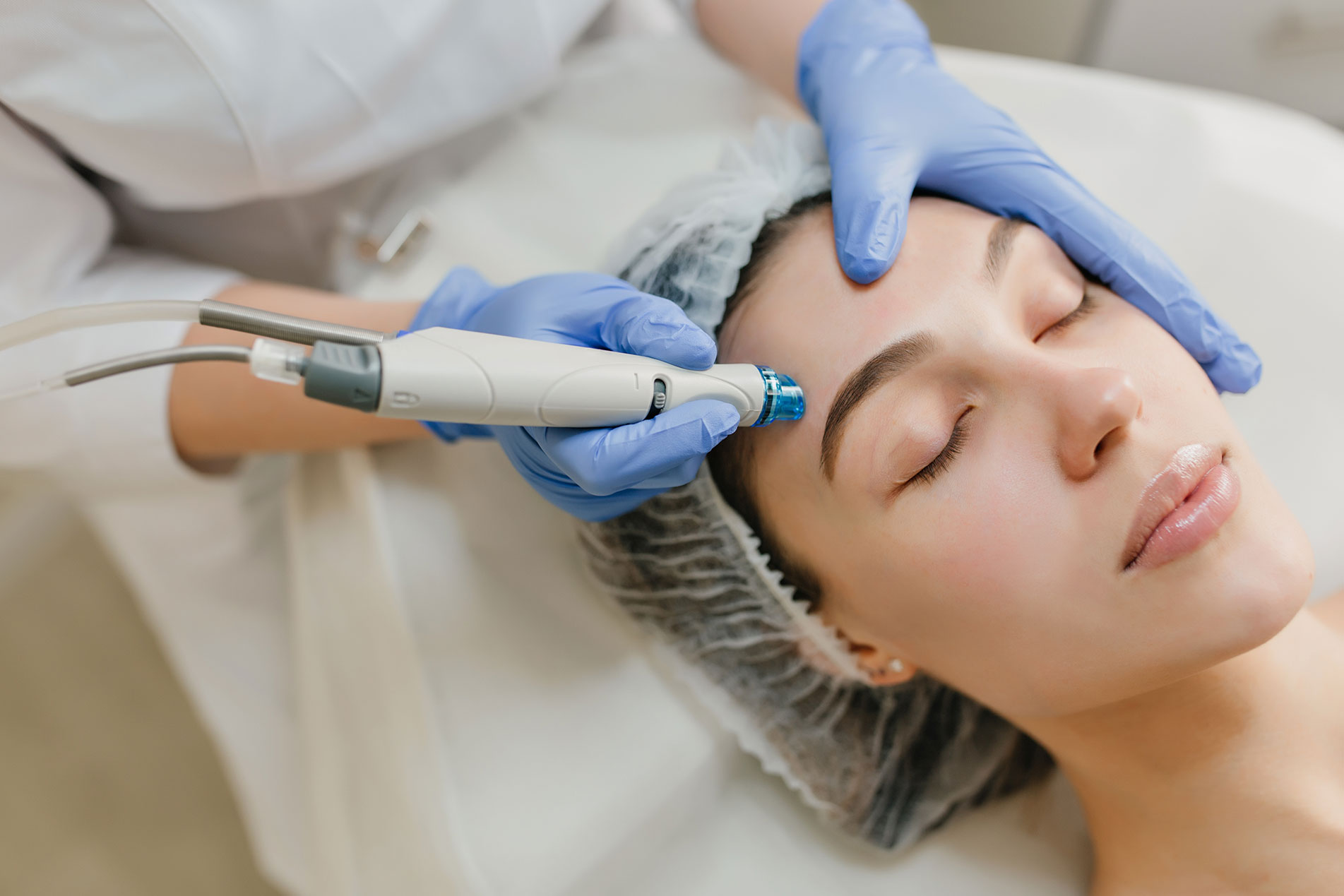A minimally invasive, non-surgical procedure called microdermabrasion seeks to improve the skin’s general tone and texture. It removes the thicker uneven outer layer of the skin using a minimally abrasive instrument, stimulating collagen production resulting in healthy looking complexion. With this procedure, dull or damaged skin can be improved, giving the patient a more youthful appearance. It can also treat skin issues like acne scars, fine lines and wrinkles as well as UV damage. Following the procedure, noticeable effects should be seen right away. Notably, microdermabrasion leaves the skin feeling rejuvenated and radiant.
Dr. Rani will extensively go over your skin troubles and suggest the best procedure for your particular need. This entails assessing the history of your skin, including previous surgical procedures, allergies, and medical disorders. Dr. Rani will decide the number of sessions needed for your skin based upon examination to get the best outcomes. Each therapy session usually lasts around 30 minutes.
Ideal candidate for microdermabrasion
- Fine lines and wrinkles: Microdermabrasion can help diminish the appearance of fine lines and wrinkles, improving the overall smoothness and texture of the skin.
- Minor scars: It can be effective in reducing the visibility of minor scars, such as acne scars or small surgical scars.
- Enlarged pores and blackheads: Microdermabrasion can assist in unclogging pores and reducing the appearance of blackheads, promoting clearer and more refined skin.
- Stretch marks: While microdermabrasion may not completely eliminate stretch marks, it can help improve their texture and minimize their visibility.
- Dull-looking skin complexion: This treatment is beneficial for individuals with dull or lackluster skin, as it promotes a more vibrant and glowing complexion.
- Uneven skin tone: Microdermabrasion can help even out skin tone by reducing hyperpigmentation or discoloration, resulting in a more balanced complexion.
- Sun damage: It is effective in addressing skin damage caused by sun exposure, such as sunspots or uneven pigmentation, helping to restore a healthier appearance.
Microdermabrasion is generally a safe procedure, but like any skin treatment, it can have some side effects. Here are the common side effects associated with microdermabrasion:
- Mild tenderness, swelling, and redness: After the treatment, it is common to experience mild tenderness, swelling, and redness in the treated area. These effects are usually temporary and typically subside within few hours to a day.
- Dry and flaky skin: Following microdermabrasion, your skin may feel dry and appear flaky. This is a normal reaction as the outermost layer of dead skin cells is exfoliated. Dr. Rani will recommend using an appropriate moisturizer to help alleviate dryness and promote skin hydration.
- Minor bruising: In rare cases, some individuals may experience minor bruising in the treated area. This is typically a result of increased sensitivity or skin fragility. The bruising should resolve on its own within a few days.
- Increased sun sensitivity: Microdermabrasion can make your skin more sensitive to sunlight. It is crucial to protect your skin from direct sun exposure after the treatment. It is recommended to use sunscreen with a high SPF, wear protective clothing, and avoid prolonged sun exposure for a few days following the procedure.
It is crucial to remember that microdermabrasion rarely causes severe or long-lasting negative effects. However, it is advised that you speak to Dr. Rani right away if you have any questions or suffer any odd reactions.
The time it takes for microdermabrasion effects to appear varies from person to person. Although the procedure has significant instant effects, it’s vital to remember that the outcomes are often fleeting. The longevity of the procedure is dependent on a number of variables, such as the skin’s specific qualities and how well the skin is taken care of after treatment.
Protecting the skin from sun exposure is crucial to maintain the effects of microdermabrasion. Daily use of sunscreen with a high SPF is advised, as is limiting sun exposure, particularly during the height of the day. Sun protection is essential because it helps stop further skin damage including hyperpigmentation and premature aging, which can affect how long the effects of microdermabrasion last.
The natural aging process does, however, nevertheless occur despite taking good care of the skin. New skin issues could develop as the skin ages more gradually. Follow-up procedures are therefore frequently advised to preserve softer skin and a more luminous complexion.
The healing period after microdermabrasion is short because it mostly targets the top layer of skin. Most of the time, it is normally safe to get another treatment around 2 weeks following the first one. Many people have two microdermabrasion treatments per month at first and then one per month as part of a maintenance plan.


